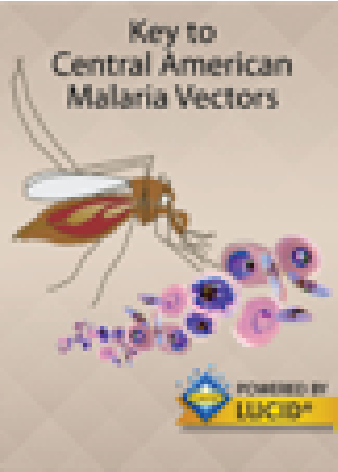NEARCTIC REGION
Etymology: San Francisco
Type locality: Felt Lake, near Stanford University [Santa Clara County], California, United States
Type depository: California Academy of Sciences, San Francisco, California, United States (CAS)
TAXONOMIC KEYS
Carpenter & LaCasse 1955
Bohart & Washino 1978
Darsie & Ward 2005
![]()
WRBU - Genera - Global - Adult
![]()
WRBU - Genera - Global - Larva
![]()
WRBU - Genera - Nearctic - Adult
![]()
WRBU - Genera - Nearctic - Larva
![]()
WRBU - Genera - Neotropical - Adult
![]()
WRBU - Genera - Neotropical - Larva
DISTRIBUTION NOTES
Mexico, United States (continental)
IMPORTANT REFERENCES
McCracken 1904: 12 (M, F*, L*; as species)
Howard et al. 1917: 1023 (syn. with pseudopunctipennis)
Aitken 1945: 327 (M, F*, P, E*; bionomics; to subspecies from syn. with pseudopunctipennis; lectotype designation)
Freeborn 1949: 391 (taxonomy, bionomics)
Penn 1949a: 66 (P*)
Yamaguti & LaCasse 1950b: 35 (M*, F*, L*)
Belkin et al. 1951: 23 (bionomics)
Carpenter & LaCasse 1955: 45 (M*, F, L*; keys)
Smithson 1972: 501 (to species)
Smithson & McClelland 1972: 80 (chromosomes*; subspecies)
Bohart & Washino 1978: 20 (M, F*, L*; keys, taxonomy, bionomics, distribution)
Arnaud 1979: 57 (type information)
Darsie & Ward 2005 (F*, L*; keys, distribution)
CURRENT SYNONYMS
syn. boydi Vargas
1939: 361 (E). Type locality: Central California, United States (NE). References: Aitken 1942: 164 (taxonomy); Ross & Roberts 1943a: 24 (synonymy); Russell et al. 1943: 23 (syn. with franciscanus); Aitken 1945: 344 (from synonymy with pseudopunctipennis to variety franciscanus); Freeborn 1949: 392 (synonomy with franciscanus); Mann 1950: 40 (E*).
syn. willardi Vargas
1941e, 1941f: 74 (E; pseudopunctipennis variety). Type locality: Chihuahua, Mexico (ISET). References: Russell et al. 1943: 23 (to synonymy with franciscanus); Ross & Roberts 1943a: 24 (synonymy); Aitken 1945: 268 (taxonomy); Osorno-Mesa & Muñoz-Sarmiento 1948: 107 (M*, L*, E*); Mann 1950: 40 (E*).
CURRENT SUBSPECIES
None
CITED REFERENCES
Aitken, T.H.G. (1942). Contributions toward a knowledge of the insect fauna of lower California. Proceedings of the California Academy of Sciences, 24(6), 161–170.
Aitken, T.H.G. (1945). Studies on the anopheline complex of western America. University of California Publications in Entomology, 7(11), 273–354.
Arnaud, P.H., Jr. (1979). A catalog of the types of Diptera in the collection of the California Academy of Sciences (Vol. 1). San Francisco, CA: Insect Associates.
Belkin, J.N., Ehmann, N., & Heid, G. (1951). Preliminary field observations on the behaviour of the adults of Anopheles franciscanus McCracken in Southern California. Mosquito News, 11, 23–31.
Bohart, R.M., & Washino, R.K. (1978). Mosquitoes of California (3rd ed.). Berkeley: University of California Agriculture and Natural Resources.
Carpenter, S.J., & LaCasse, W.J. (1955). Mosquitoes of North America (North of Mexico). Berkeley: University of California Press.
Darsie, R.F., Jr., & Ward, R.A. (2005). Identification and geographical distribution of the mosquitoes of North America, north of Mexico. Gainesville: University Press of Florida.
Freeborn, S.B. (1949). Anophelines of the Nearctic Region. In M.F. Boyd (Ed.), Malariology: A comprehensive survey of all aspects of this group of diseases from a global standpoint (Vol. 1, pp. 379–398). Philadelphia, PA: Saunders.
Howard, L.O., Dyar, H.G., & Knab, F. (1917). The mosquitoes of North and Central America and the West Indies. Systematic description. Part II. Washington, DC: Carnegie Institution for Science.
Mann, F.G. (1950). Dos nuevas sub-especies del Anopheles pseudopunctipennis Th. 1901. Biológica, 8-11, 33–42.
McCracken, I. (1904). Anopheles in California, with description of a new species. Entomological News, 15(1), 9–14.
Osorno-Mesa, E., & Muñoz-Sarmiento, F. (1948). Una nueva variedad de Anopheles pseudopunctipennis. Caldasia, 5, 105–113.
Penn, G.H. (1949a). Pupae of the Nearctic anopheline mosquitoes north of Mexico. Journal of the National Malaria Society, 8(1), 50–69.
Ross, E.S., & Roberts, H.R. (1943a). Mosquito atlas. Part I. The Nearctic Anopheles, important malaria vectors of the Americas, and Aëdes aegypti, Culex quinquefasciatus. Philadelphia: The American Entomological Society, the Academy of Natural Sciences.
Russell, P.F., Rozeboom, L.E., & Stone, A. (1943). Keys to the anopheline mosquitoes of the world with notes on their identification, distribution, biology, and relation to malaria. Philadelphia, PA: American Entomological Society, Academy of Natural Sciences.
Russell, P.F., West, L.S., Manwell, R.D., & Macdonald, G. (1963). Practical Malariology (2nd ed.). London, England: Oxford University.
Smithson, T.W. (1972). Species rank for Anopheles franciscanus based on failure of hybridization with Anopheles pseudopunctipennis pseudopunctipennis. Journal of Medical Entomology, 9(6), 501–505.
Smithson, T.W., & McClelland., G.A.H. (1972). Salivary gland chromosome map of Anopheles pseudopunctipennis franciscanus. Mosquito News, 32(1), 80–87.
Vargas, L. (1939). Datos acerca del A. pseudopunctipennis y de un Anopheles nuevo de California. Medicina: Revista Mexicana Suplemento, 19, 356–362.
Vargas, L. (1941e). New variety of Anopheles pseudopunctipennis (Diptera, Culicidae). Bulletin of the Brooklyn Entomological Society, 36(2), 73–74.
Yamaguti, S., & LaCasse, W.J. (1950b). Mosquito fauna of North America. Part I. Genus Anopheles. Office of the Surgeon, Headquarters, 8th Army, US Army, United States.
CITE THIS PAGE
Walter Reed Biosystematics Unit (Year). Anopheles franciscanus species page. Walter Reed Biosystematics Unit Website, http://wrbu.si.edu/vectorspecies/mosquitoes/franciscanus, accessed on [date (e.g. 03 February 2020) when you last viewed the site].








































































































































































